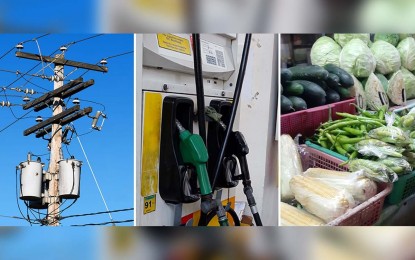[1.28] BSP, 2라운드 효과 해결 위해 지속적인 금리 인상 약속
컨텐츠 정보
- 15,844 조회
본문
MANILA – Bangko Sentral ng Pilipinas(BSP)는 인플레이션 상승의 2차 효과가 추가로 증가하는 것을 방지하기 위해 "필요한 만큼" 주요 정책 금리를 계속 인상하겠다고 약속했습니다.
2023년 1월 24일자 "Ferdinand R. Marcos Jr." 대통령에게 보내는 공개 서한에서 BSP 책임자 "Francisco Dakila Jr." 인상은 또한 "인플레이션 기대가 흔들리는 것을 방지하기 위한 것"이라고 말했습니다.
그는 "통화 조치에 대한 우리의 접근 방식은 데이터에 의존하고 주어진 시점에서 사용 가능한 다른 거시 경제 정보와 함께 인플레이션 전망에 따라 달라질 것"이라고 말했다.
금요일 BSP 웹 사이트에 게시된 공개 서한은 2022년부터 2024년까지 2%에서 4%인 정부의 인플레이션 목표 밴드 위반 요인을 설명하기 위해 발행되었습니다.
물가상승률은 지난해 평균 5.6%로 12월 8.1%로 2008년 11월 이후 최고치를 기록했다.
월 물가상승률은 지난해 4월 연율 기준으로 전월 4%에서 4.9%로 높아져 정부 목표 밴드를 넘어섰다.
BSP는 “국제유가 상승세를 반영해 국내 연료펌프 가격이 오르면서 지난해 3월 국내 물가상승률이 상승세를 타기 시작했다”고 말했다.
국제유가 급등은 동유럽의 지정학적 이슈에 따른 수급긴축 우려와 산유국들의 생산 목표치 하향 결정에 따른 것으로 풀이된다.
BSP는 물가상승률이 높아지면서 각국 중앙은행들이 각각 기준금리를 인상하기 시작했다고 설명했다.
이는 설탕, 생선, 야채와 같은 여러 식품 품목에 대한 국내 공급 제한과 에너지 가격 상승으로 인한 글로벌 시장의 공급 충격과 함께 비료 및 농업 비용의 상승으로 이어져 인플레이션 우려를 높였습니다. , BSP는 말했다.
이로 인해 금융시장의 변동성도 지속됐고, 이는 페소화 약세와 수입원가 상승으로 이어졌다.
억눌린 수요는 또한 작년에 가격 압박에 기여했으며 그 결과 헤드라인 인플레이션의 상승뿐만 아니라 변동성이 큰 석유 및 식품 품목을 제외한 핵심 인플레이션도 발생했습니다.
결국 교통비 인상, 최저임금 인상 등 2차 물가 상승 효과가 나타났다.
이에 BSP는 지난해 5월 경기회복이 금리인상 충격을 완화할 것으로 보고 기준금리를 인상하기 시작했다.
중앙은행의 정책결정 통화위원회(MB)는 지난해 BSP의 주요 정책금리를 하룻밤 역환매(RRP) 시설에 대해 5.5%로 총 350bp 인상했습니다.
이는 2020년 기준금리 인하로 기준금리가 사상 최저 수준인 2%대까지 떨어졌는데, 이는 코로나19 팬데믹이 국내 경제에 미치는 영향에 대응하기 위해 대출 활동을 장려하고 경제활동을 활성화하기 위해 이뤄졌다.
중앙은행은 최근 전망에 따르면 인플레이션은 지난 12월에 정점을 찍었고 올해는 국제 시장에서 유가와 비석유 상품 가격이 완화됨에 따라 둔화될 것이라고 말했습니다.
기준금리 인상과 운임의 기저효과도 올해 물가상승률 둔화에 기여할 것으로 전망했다.
인플레이션은 2023년 하반기까지 2~4% 목표 범위로 되돌아갈 것으로 예상된다.
그러나 BSP는 "인플레이션 전망을 둘러싼 위험의 균형이 2023년에는 위쪽으로 크게 치우쳤지만 2024년에는 대체로 균형을 유지하고 있다"고 언급했습니다.
"정책 기간 동안 인플레이션 전망에 대한 상향 위험은 주로 무역 제한, 국내 기상 교란 가능성으로 인한 과일 및 채소 가격 인상, 설탕 가격 상승, 운송 요금 인상 및 2023년 잠재적 임금 조정에 대한 청원에서 비롯됩니다. ,”라고 말했다. "그러나 이러한 요인들은 예상보다 약한 글로벌 회복 효과에 의해 상쇄되는 것으로 보입니다." (PNA)
This is the Original Article from PNA NEWS
[1.28] BSP vows sustained rate hikes to address 2nd-round effects
MANILA – The Bangko Sentral ng Pilipinas (BSP) has vowed to continue hiking its key policy rates “as necessary” to help prevent a further increase in the second-round effects of the elevated inflation rate.
In an Open Letter to President "Ferdinand R. Marcos Jr.," dated Jan. 24, 2023, BSP Officer-in-Charge "Francisco Dakila Jr." said the hikes also aim “to prevent inflation expectations from becoming disanchored.”
“Our approach to monetary action will remain data-dependent and contingent on the inflation outlook, along with other available macroeconomic information at a given point in time,” he said.
The Open Letter, posted on the BSP website on Friday, was issued to explain the factors behind the breach in the government’s inflation target band, which is 2 percent to 4 percent for 2022 until 2024.
The rate of price increases averaged 5.6 percent last year, with the December level of 8.1 percent the highest since November 2008.
The monthly inflation rate breached the government’s target band in April last year when it accelerated to 4.9 percent on an annual basis from the previous month’s 4 percent.
The BSP said the domestic inflation rate commenced its uptrend in March last year “as domestic fuel pump prices increased, reflecting the uptrend in international crude oil prices.”
The jumps in the global prices of oil were traced to concerns about tighter supply conditions vis-à-vis the impact of geopolitical issues in Eastern Europe and the decision by oil-producing countries to lower production targets.
The BSP explained that as the rate of price increases began to rise, central banks around the globe started to increase their respective key rates.
This, along with domestic supply constraints on several food items such as sugar, fish, and vegetables and the supply shocks in the global market because of the higher energy prices, which resulted in upticks in the prices of fertilizer and farming costs, increased inflation concerns, the BSP said.
Volatility in the financial market also persisted because of this and, in turn, weakened the peso and led to higher importation costs.
Pent-up demand also contributed to price pressures last year and resulted, not just in the uptick of the headline inflation but also in the core inflation, which excludes the volatile oil and food items.
Eventually, the second-round effects of higher inflation materialized as seen in the hikes in transport fares and the minimum wage.
Thus, the BSP began to hike its key rates in May last year after noting that the recovery of the economy is seen to cushion the impact of the rate hikes.
The central bank’s policy-making Monetary Board (MB) increased the BSP’s key policy rates by a total of 350 basis points last year to 5.5 percent for the overnight reverse repurchase (RRP) facility.
This is a turn-around from the rate cuts in 2020, which brought the RRP to a record-low of 2 percent, which was made to encourage lending activities and boost economic activities to counter the impact of the pandemic on the domestic economy.
Amid these developments, the central bank said its latest forecast indicates that inflation likely peaked last December and will decelerate this year as prices of oil and non-oil commodities ease in the international market.
It said the base effects of the key rate hikes and the transport fare are also expected to contribute to the deceleration of the inflation rate this year.
“Inflation is expected to revert to the 2-4 percent target range by the second half of 2023,” it said.
The BSP, however, noted that the “balance of risks surrounding the inflation outlook are strongly skewed towards the upside in 2023 but remain broadly balanced for 2024.”
“The upside risks to the inflation outlook over the policy horizon mainly stem from trade restrictions, increased prices of fruits and vegetables owing to possible domestic weather disturbances, higher sugar prices, as well as pending petitions for transport fare hikes and potential wage adjustments in 2023,” it said. "These factors are, however, seen to be countered by the effects of weaker-than-expected global recovery.” (PNA)
관련자료
-
이전
-
다음


